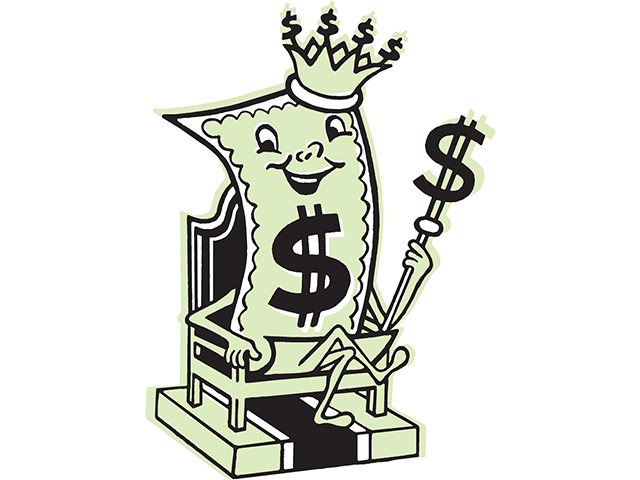Breitbart Business Digest: King of the World—Dollar Still Holds the Throne

The World Is Not Dedollarizing
The dollar is always on the verge of collapse—until it isn’t.
Every few months, we get a fresh wave of dedollarization chatter, usually prompted by U.S. fiscal brinkmanship, Chinese trade overtures, or academic fantasies about a new world currency regime. But as with most financial forecasts, reality arrives with less drama than expected. This week brought a reminder: for all its faults, the dollar remains the asset the world runs to when things fall apart.
The catalyst this time was an Israeli airstrike deep inside Iran. In response, the dollar index jumped 0.52 percent Friday, snapping a two-day losing streak. It gained 0.46 percent against the yen, and 0.23 percent against the Swiss franc. Even the euro, which had posted four straight daily gains, dropped 0.35 percent to $1.1543.
Gold, the dollar’s eternal wingman, rose 1.26 percent to $3,425 an ounce. Brent crude surged 5.62 percent to $73.27 per barrel. Whatever the financial press may say about multipolarity, the real-time evidence suggests a different story: panic still speaks American.
Treasurys: Still Royal, If Not Divine
Thursday’s $22 billion 30-year bond auction was expected to disappoint. Instead, it “stopped through” at a yield of 4.844 percent, lower than market pricing at the time. Yields fell eight basis points in the aftermath. Primary dealers, often a dumping ground of last resort, were awarded just 11.4 percent—their smallest share since November.
Compare that to the weak 20-year auction in May, which saw yields spike to 5.15 percent, their highest level in nearly two decades. This time, markets exhaled. The vigilantes grumbled, then bought.
Yes, yields edged higher again Friday. The 10-year hit 4.42 percent; the 30-year reached 4.91 percent. But those were moves driven by energy prices and worries that further escalation in the Israel-Iran conflict could hurt global growth—not an abandonment of U.S. debt.
Talk Bearish, Act Bullish
Bank of America’s June survey shows that “short the dollar” is now the most crowded trade among global fund managers. But their actual positions betray the mood. Most are still long USD. Why? Because nearly 90 percent of global FX trades involve the dollar. Because 59 percent of global central bank reserves are still held in dollars. Because global commodity markets—from oil to soybeans—still settle in greenbacks.
The euro? That currency represents a union of 20 governments with no shared fiscal policy. The yuan? It’s convertible only when the Chinese Communist Party says so. Crypto? Please.
Even the BRICS bloc, which claimed last year it would “build a rival to the dollar,” quietly retreated to settling trade in… more dollars.
The Throne Is Cracked, Not Vacant
America’s fiscal trajectory is not exactly inspiring. The Congressional Budget Office now projects annual deficits of more than $1.5 trillion through the end of the decade. The national debt is set to surpass $45 trillion by 2033. And Moody’s stripped the U.S. of its last AAA credit rating just last month.
But none of that has prompted a buyer’s strike. Treasurys are still clearing. The dollar is still rallying on bad news. And when missiles fly, capital flees back to the king.
The critics of dollar dominance may speak loudly and often. In practice, the dollar still rules.